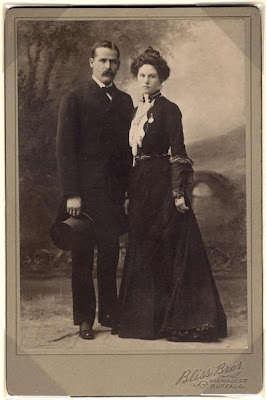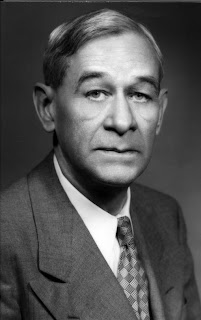
It is best to ski in the several miles, or use the snowshoes, by the light of the moon because of avalanche danger, especially that particular year -- with seven, maybe eight, feet of snow in the flat areas.
By Rob Carrigan, robcarrigan1@gmail.comWhen silver was still king in San Juans, miners told the story of a wild woman’s blood-curdling scream that periodically jarred the sand out of their sluice boxes up near the head of Horse Gulch on the ridge between Dunton and Rico.
Loggers who followed, told tales of the same scream as they canted around logs in the lake around Barlow. Acid plant workers had similar yarns, as they walked back and forth between the mountain towns for dances and such, in the ‘30s, ‘40s and the ‘50s.
Some claimed it was mountain lions. Or the winds whistling through the bare gaps above timberline. But for many who had heard it first-hand, the scream had a human quality, though admittedly, it could have been from another world.
The trail snaked its way up Horse Gulch through the ‘quakies,’ pine and spruce. Then out into the open on an old roadbed with steep bare slopes above it, where the snow runs in slides, even in driest of winters.
It is best to ski in the several miles, or use the snowshoes, by the light of the moon because of avalanche danger, especially that particular year -- with seven, maybe eight, feet of snow in the flat areas. The five skiers parked the trucks down near Orville Jahnke’s place, strapped on the equipment, made their way around the gate used to close Lizard Head Pass, and were headed up through the darkness on the trail by 9 p.m. It was slow going up through the trees, but after reaching the open areas, a person could see forever up the steep embankments.
Finally, on a wide, flat bench that originates on the dark side of the gulch, and in the daytime, reaches clear out into the sun -- the trail leads to the big cabin, the smaller one, and other outbuildings. Positioned on a 100-year mining patent, the buildings look almost like a little town there in the high country. The main cabin hangs near the bench’s edge so it is easier to get rid of the snow accumulation on the one side.
When skiing group reached the cabins about midnight, two of them tunneled down to the door on the high side with an aluminum scoop they brought with. Another two went to shovel down to the outhouse with a beat-up scoop they found hanging under the rafters on the small cabin, and the last one was in charge of taking care of the skis and other equipment.
All the doors opened to inside in this country. If not, a person would have to shovel all week to get enough space for a door to swing outward like some external doors in town.
The plan was to try to eventually get the main cabin warm enough so the snow would slide off the tin roof and down over the benches edge into the creek. That’s the main reason they were up there. The seven feet of snow needed to be removed this winter to avoid roofs collapsing. A few years earlier, in ’78, everyone was complaining about a dry winter. Not a soul would complain about too little snow this year.
In less than 30 minutes, the skier/shovelers had the front door open and were working on getting a fire started and the propane lights working. Little steps made of snow and ice in the tunnel allowed them to navigate down the nine-foot drift into the cozy cabin. Windows on the ledge side of the cabin provided plenty of light from the moonlit snowscape inside to get the fire started.
They spread out their sleeping bags in the floor near the sunken fireplace, at least for the first night. When they able to get the temperature above freezing, they could move back into the bedrooms. In an effort to do so, they filled and stoked up the cook stove on the one end of the cabin and banked huge logs in the main fireplace on the other end.
At sunup, three of them grabbed shovels and headed over to take care of snow removal on the smaller cabin and the two remaining set to work, trying to conjure up breakfast. By 8:30, the starving shovel crew switched places with the breakfast bunch and they traded back and forth for the rest of the morning as someone got cold or wet or hungry, or all three.
By noon it was a tolerable 55 degrees in the center of the room and water was starting to run on the ledge side of the eaves. Around 4 in the afternoon, there was a slow rumble, a muffled crunch and then a big loud swoosh as two thirds of the sunny side snow pack slid off the roof. By sundown that side of the roof was clear and the shadowed side of the building was nearly bare as well. It looked like they would be able to ski all day tomorrow.
In celebration of their progress that day, the little cabin crowd stretched the poker game into the night. When one of them whined about funny noises, ‘like a woman screamin’ following his trip to the outhouse, the rest dismissed it as too much bourbon, too much imagination and too little experience in high country woods.
Most of them struggled a bit the next morning with the effects of limited sleep and some were slowed by their own excesses. It was at least 9 a.m. before the first of them crawled up through the tunnel out into the intensely bright, white snow and snapped into a pair of ski bindings.
They spent the day playing in the deep powder and didn’t make it back to the cabin for lunch until at least 2 p.m. By the time they had eaten, re-stoked the fires, changed socks, climbed back out through the tunnel and snapped back into the bindings, the sun was already edged by the high canyon walls.
The sun’s low angle and the 13,000 and 14,000 foot high peaked ridges made for spectacular shadow play, photos and the best skiing ever. The five pressed higher up the draw to see if they could see Dunton from the ridgeline. Though it was starting to get dark, the ridge loomed only a few hundred yards above them and they told themselves that they couldn’t ski out past those slide areas until 9 or 10 p.m. anyway. So they pressed on.
The first low moans went mostly unnoticed. But as they topped the high saddle promontory, all five couldn’t help but hear a sound like the wailing of a banshee. But what was it? It sounded like crying, or screaming, or what?
And then one of them spotted the dark figure, barely moving at first, then shuffling faster and faster in the shadows, near the rock outcropping almost a quarter of mile away, down on the Dunton side.
Although it was way too far off to say for sure, it looked like someone on snowshoes, a small man, or a woman, with a pack or something on his or her back.
Or did they see it at all? It would be too dangerous to try and follow. But they did see it, didn’t they? And screams, or wailing, or cries … those were real, weren’t they?
No one is going to believe this, they all agreed.
Skiing out, after gathering their stuff and resealing the cabin, they still fumbled with it.
As they carefully edged down toward Rico and out to the blacktop, the thought echoed between them in the steep canyon’s snow-buried walls.
No one is going to believe this.
And no one did. Years later, they began to doubt it themselves.
###











